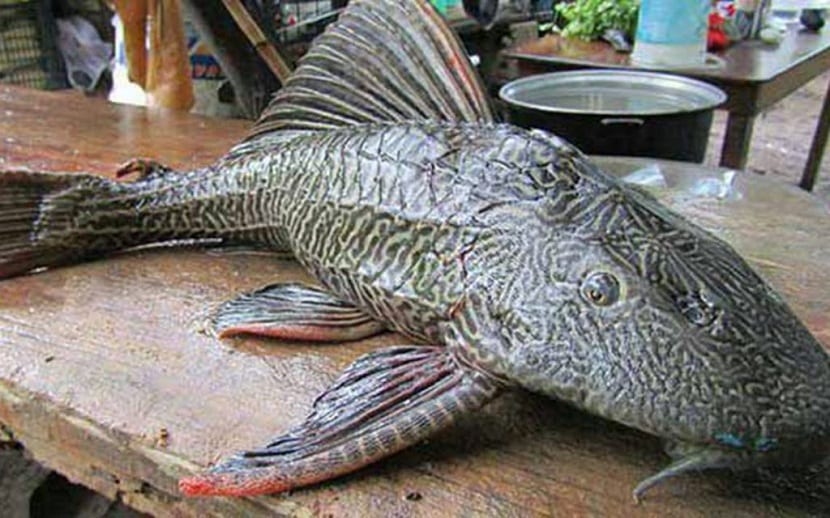
Like other fish clean bottoms like the catfish or otocinclus fish which is glass cleaner, today we come to talk about another fish that cleans fish tanks. Its about devil fish. Its scientific name is Hypostomus plecostomus and belongs to the order of the Siluriformes. It is also known by the name of fish sucking algae, cleaning glass, sucking stones, glass sucking or glass sucking.
In this article we are going to focus on thoroughly describing this fish and making known all the care it needs in captivity. Do you want to know more about the devil fish? Keep reading 🙂
Key features
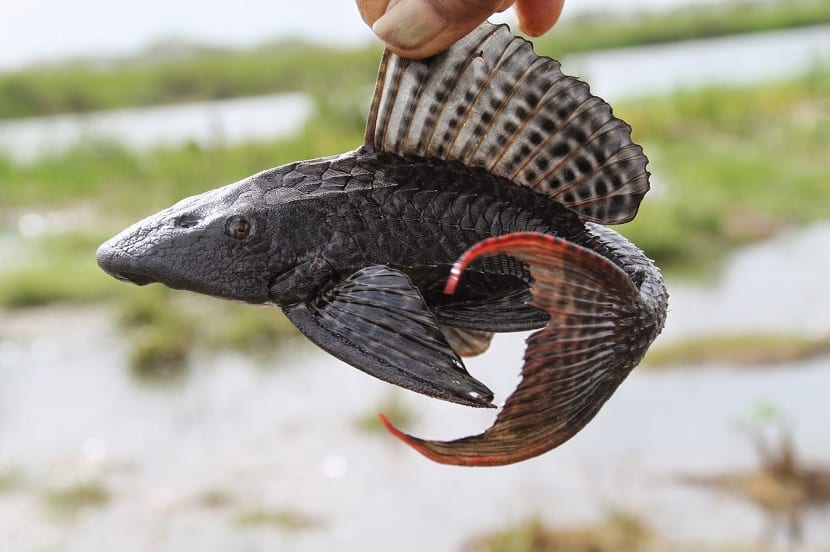
When you are in nature, you can measure up to 40 centimeters in length, but they are in captivity does not usually exceed 30 centimeters. Its body is flattened in the dorsal-ventral part, while the dorsum is arched and covered by bony plates. The dorsal and caudal fin areas are not covered by bony plates.
The anterior part of the body is triangular in shape and ends in an oval with the caudal peduncle. The head, like the dorso-ventral axis, is flattened.
With respect to its mouth, it is located in the lower part and has some small barbs that allow you to cling to the glasses from the fish tanks to take food. They can also stick to rocks to suck up food. Its mouth is suction type and it also serves to anchor itself to rocks and logs and not be dragged when the current is high.
The first dorsal fin is large as if it were the sail of a ship. The second is smaller compared to the first. It has a fairly wide tail fin with a concave edge. This helps the devil fish to move very quickly over short distances to flee from potential predators. The anal fin is quite small while the pectoral and ventral ones resemble blades due to how developed they are.
Color, body and behavior
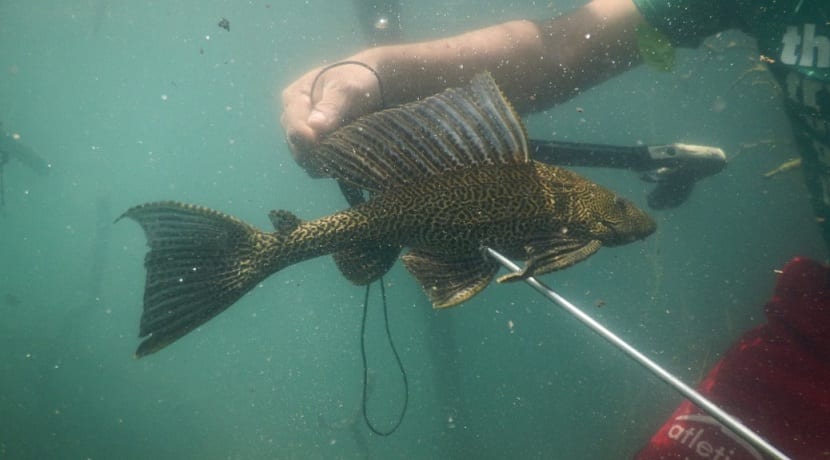
Its body is light brown with some round, dark spots. The head also has dark spots. Depending on the species, there are some specimens that have a dark coloration throughout the body.
This tank cleaning fish does not have scales, but protects its body with bales of cartilage and spines. The thorns are used to protect themselves from predators or even to fight with specimens of the same species. It has a longer lifespan than other species de peces, coming to live up to 15 years.
Regarding its behavior, it is a nocturnal fish. It stays hidden during the day. It is generally quite calm and will not cause problems with the rest de peces. However, it will be quite territorial with fish that are on the bottom and with those of the same species.
The devil fish has the ability to last a long time out of water. Even walk through it. Situations have been reported de peces devil that They have lasted up to 14 hours out of the water.
They are able to breathe air thanks to the modified stomach. It is larger and thinner, so if the animal begins to swim vertically, it will be able to breathe air.
Range and habitat
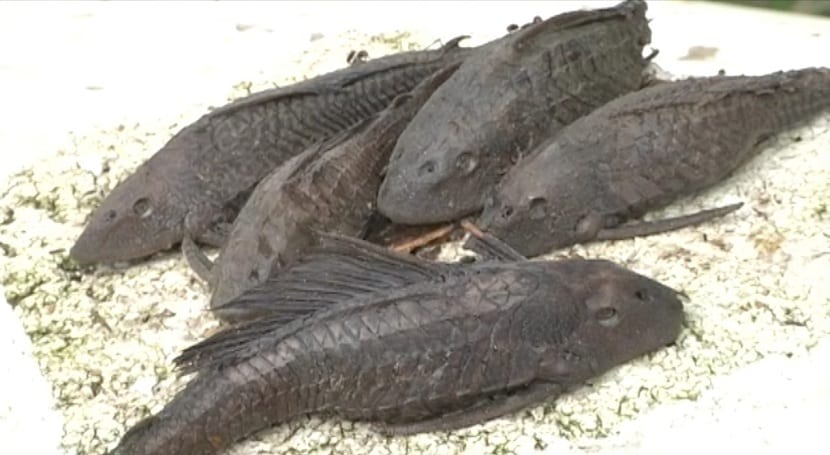
The fish is native to Central and South America. It can be found in countries like Costa Rica, Uruguay, Panama, Colombia, Venezuela, Ecuador and Guyana. They can also be found in the Amazon Basin, especially in the Orinoco River.
As for its natural habitat, it prefers rivers and streams whose waters have medium to rapid movements. They are not afraid of strong currents since they can grab onto rocks with their sucking mouth. Specimens that live in calmer waters have also been recorded.
Devil fish reproduction
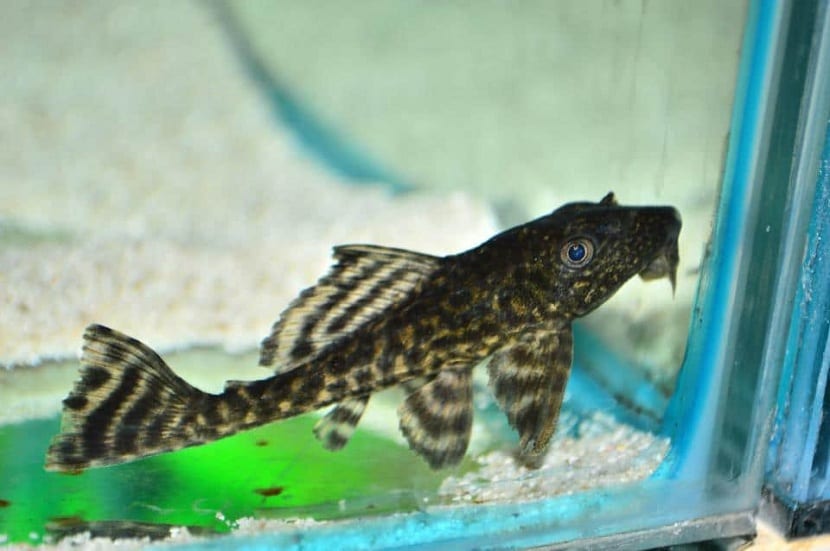
You reach sexual maturity when reaches 30-40 centimeters in length. It takes about a year for them to reach this size. For spawning, these fish dig horizontal galleries in the walls where the soil is more clay and soft. It is there where they deposit the eggs.
Due to this breeding behavior, it has been almost impossible for them to breed in captivity in a fish tank. Once the female lays the eggs, it is expelled from the cavities by the male. Sometimes there is aggressiveness on the part of the male. And it is your duty to take care of the eggs. There are other fish, such as the surgeon fish, who is not in charge of caring for their young.
Food
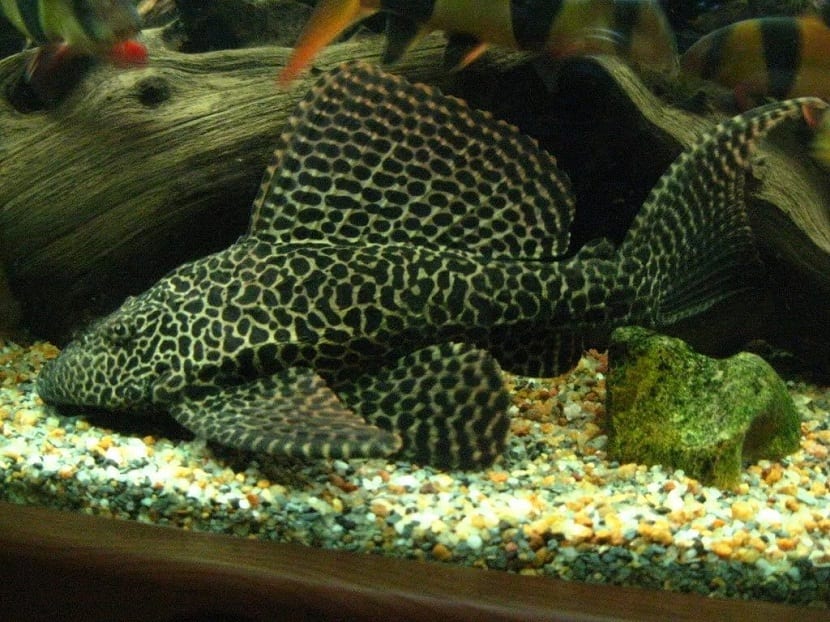
Their feeding it is fully omnivorous, although he prefers the vegetarian part more. It is characterized by eating algae that it scrapes from the surface of rocks or other objects. In addition, it can eat the food scraps of other fish, even if they are beginning to decompose.
It is at night when they leave their shelters to look for food. They tend to stick to small logs that are at the bottom to remove the cellulose and feed on it to better digest their meals.
Necessary care in captivity

For those who want to have the devil fish in their aquarium, a certain care list must be followed. It is quite compatible with other species de peces of aquarium. Doesn't pay much attention to the other fish, since they are kept in the funds. If a specimen of the same species is found, it will become very aggressive. You need space to swim comfortably.
You need a tank that can hold between 200 and 300 liters minimum. The substrate should be coarse gravel and decorations cannot prevent you from swimming quietly.
The water conditions should be alkaline, but slightly harsh. The water temperature should be between 22 and 30 degrees so that they remain in good condition. Its reproduction in this species has not been possible while in captivity.
Like clownfish, it eats algae and other foods hidden in the substrate. needs food de peces background and some vegetables so that it develops correctly.
With this information you can take good care of the devil fish in your fish tank. In return you can have the bottom of the tank clean.